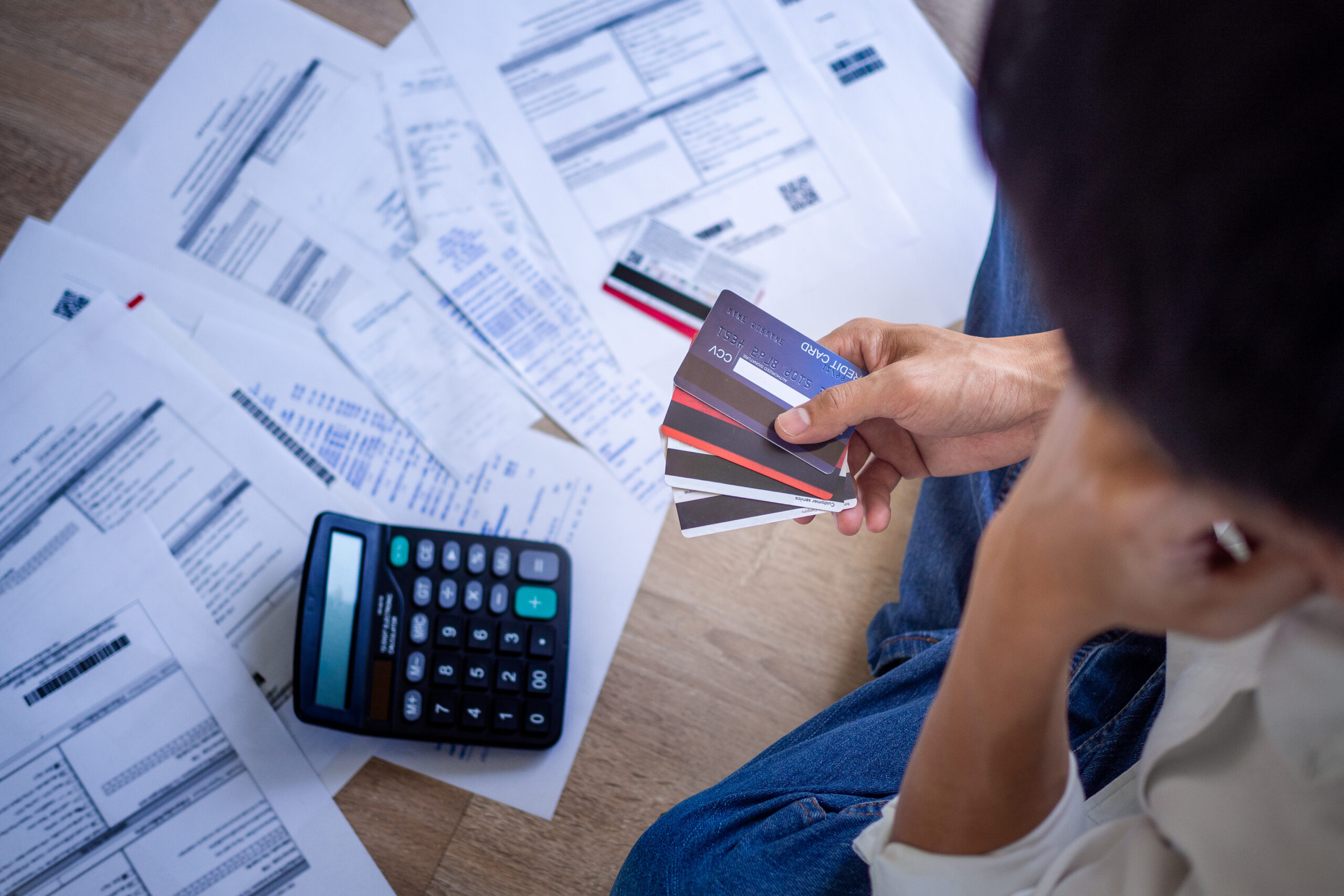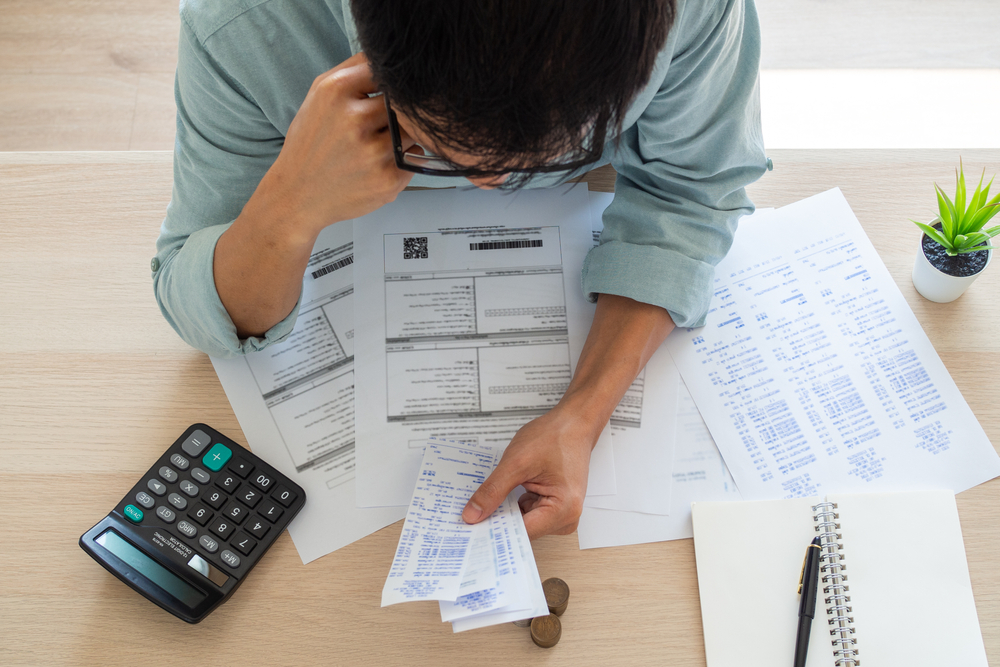Take Control of Your Debt: A Step-by-Step Financial Checkup

Do you have a lot of debt? You’re not alone. Most Americans — 77%, according to the U.S. Department of Labor — are in debt, with the average household owing over $104,000. It can feel tough to plan for your future when you are burdened with so much money owed to credit cards, loans, and the like.
The good news is that you can still plan for your future, including retirement or homeownership, even when you have a mountain of debt. It starts with a financial checkup, where you identify the areas you can improve by handling finances, figure out how much you really owe, and create a plan for paying it down.
Assess Your Current Financial Situation
Before you can figure out where you’re going, you need a firm understanding of where you are right now. Here’s how to get there.
Calculate Your Total Debt
Start by writing down all your debts. Include credit cards, student loans, personal loans, mortgages, car loans, and any other debt you have accumulated over the years. Write down each debt, how much you pay each month, how much is owed, and the interest rate. Also, note whether the debt is secured or unsecured. Add it all up to get a broad picture of your total debt.
Review Your Credit Report and Score
When it comes to your finances, knowledge is power. Understanding your credit score and reviewing your credit report is key to ensuring you can get the debt help you need.
Pull your credit report to check for inaccuracies. You can get a free copy of your report from each of the three reporting agencies by going to AnnualCreditReport.com. Check your loans and other debt against the credit report and immediately report any discrepancies.
What about your credit score? “Your credit score is only important in that it affects your ability to acquire new credit,” says Adem Selita, the co-founder and CEO of The Debt Relief Company. “If you plan on getting out of debt without acquiring new credit, it isn’t actually that important. However, if you plan on looking at debt consolidation loans or balance transfer options, it’ll impact your ability in that you will likely pay more for interest on those options.”
Evaluate Your Income vs. Expenses
Now that you know what your debts are, consider how much money you have coming into your household and how much goes out each month. Look at your income and cash flow. Where is that money going?
The top places should be your mortgage or rent, utilities, insurance, and the like. Look deeper at what you spend each month in other ways, such as on streaming services, eating in restaurants, and engaging in entertainment (movies and the like). Look for things you can cut out of your expenses list. The money saved can go straight to paying down your debt.
Prioritize Debt Repayment
Now that you have a solid grasp of your financial situation and debt, it’s time to figure out the best way to pay it off.
Identify High-Interest Debts First
Go back to your list of debts. Which ones have the highest interest rates? These will likely be personal loans or credit cards. List your debts in order of the highest interest, not the highest amounts owed. In most cases, the high-interest debts will be the ones you tackle first. The lower those balances go, the less you will pay in interest.
Explore Debt Repayment Strategies
Several debt repayment strategies exist. The most popular include the debt snowball and the debt avalanche. Here’s how they work.
- Debt Snowball: In this method, rank your debts with the smallest amount first, regardless of interest rate. Pay down the smallest amount first. Soon, that debt will vanish, and you will have extra cash to apply to the next lowest debt.
- Debt Avalanche: This method requires ranking your debts according to the highest interest rate, irrespective of the balances. To slow down your debt, put all you can afford into the account with the highest interest rate.
Though each method has advantages, Selita considers the debt snowball his top choice.
“It is best because it provides positive reinforcements and rewards you psychologically once each credit card balance disappears,” Selita recommends. “It also makes managing your finances more convenient as you get rid of each required minimum payment, one by one. As those balances go to zero, you will feel a burden lifted off your shoulders at a more accelerated rate than a debt avalanche or another payoff strategy.”
Consider Debt Consolidation
Debt consolidation can lower your interest rates through negotiation with creditors and give you a lower monthly payment, one that you can count on to stay the same every month.
As long as you make those payments on time, you can look forward to paying off your debt much faster than you would have if you chose to tackle each debt on your own. However, there could be fees charged by the debt consolidation company – be sure to check the fine print before signing anything.
Review Your Budget
Will you have enough cash on hand to cover your new debt-paying goals? Now is the time to review your budget.
Track Daily Spending
Track your daily spending for one month. This includes everything from that latte in the morning on the way to work to that big tax bill that comes due in the spring. After a few weeks, you will start to see patterns. For instance, how much does that latte cost you over the span of a month? Do you have things in your budget that you don’t really need, like a car wash every few days or picking up fast food on the way home three or four nights a week?
Create or Update Your Budget
Create your budget based on what you have coming in versus what you have going out. Your daily spending will help you be very realistic about your budget and see where the extra money goes. Adjust the budget to fit all your bills and obligations, including the debt you must pay back.
Be sure to account for everything. “Many consumers overlook the cost of servicing their interest and any interest payments,” Selita says. “Otherwise, things that live outside your normal budget, like “cash transactions/payments,” can often also go missed. Envelope-based budgeting can help account for these often-missed portions of a consumer’s budget.”
Then, begin looking at places where you can cut back and send that money to another place. For instance, choose to cut down your fast food buying by once a week and put that $25 (or more) into your debt.
Build an Emergency Fund
While throwing every dime at your debt is tempting, that’s not the best idea. An emergency fund is an absolute must so that you have a little cushion to turn to when things get difficult.
Start Small with a Savings Goal
While you should work on paying down debt, you should also work on saving money. Your immediate goal should be to have an emergency fund of $1,000, so start pouring money into it. Even if it’s $10 a week, it can add up quickly! Put the money into an interest-bearing savings account to earn even more. However, be sure you can access your money quickly through an ATM — it is a fund for emergencies.
“The simplest strategy can sometimes be the best,” Selita says. “Take things slow and make small incremental steps towards your goal; this way, you’re more likely to become successful.”
Automate Savings
Automate your savings to ensure you save money and don’t find another way to spend it. Set up your account so that a small amount of money is taken from your checking account at regular intervals, such as the day after you get paid. Choose an amount that is low enough so you won’t miss it, and it won’t send you into an overdraft.
Evaluate Your Loan Options
Is the interest on those credit cards just growing too quickly? A loan might be a game changer.
Refinance High-Interest Loans
If you have high-interest loans that are driving you further into debt, speak to your lender about refinancing. Refinancing high-interest loans to obtain a lower rate is sometimes possible, especially if you have some money to pay down the principal or if your credit score has dramatically improved since you first took out the loan. The only way to know for sure if you qualify for refinancing is to ask your lender.
Consider a Personal Loan for Debt Consolidation
It might not seem that going into more debt can actually help you get out of debt, but that’s what a debt consolidation loan is all about. However, take caution when choosing to go this route.
“A personal loan could help some consumers by helping them consolidate with a lower interest, but in most scenarios, adding more debt to get rid of other debts usually isn’t a great idea,” says Selita. “It just confuses your situation by throwing more debt into the mix.”
If you choose to take out a personal loan, make sure it is enough to cover all your credit card and other high-interest debt. It should also have an interest rate well below what you are paying right now on credit cards and other debts.
Check for Financial Assistance and Relief Programs
Sometimes, you need a little help in paying down the debt. Relief programs can be the assistance you need.
Government and Non-Profit Programs
Debt management programs, including credit counseling, are available through many federal, state, and local agencies. These programs are usually free of charge and provide a wealth of resources to refer to when the program is over. Some nonprofit organizations can help with debt relief under certain circumstances; these often take the form of financial hardship programs.
Look into what is available in your area. The National Foundation for Credit Counseling is a good place to begin. You can also contact credit card companies or lenders to learn about in-house debt relief programs.
Negotiate with Creditors
Creditors want their money. They are likely to be willing to negotiate with you to ensure they get at least a healthy portion of it. Give them a call and explain the situation you’re in and what would help you get out of it. This might mean a different repayment plan, a lowering of interest rates, or relief options the creditor offers.
“The best strategy to negotiate with creditors is honesty.” Selita says. “Most people that are in debt didn’t get into it for ‘no reason.’ Most consumers carrying burdensome debt have experienced some form of hardship or another. Candidly explaining this to your creditors is usually your best bet, however. Otherwise, you are just typically at the mercy of your creditors.”
When a creditor does agree to adjust the terms, honor your side of that commitment. The more you show that you are working hard to pay down the debt, the more leniency you are likely to receive.
Plan for the Future
Keep these tips in mind once you have a solid plan for paying down your debt.
Set Debt Payoff Goals
Be realistic about your debt and how long it will take to pay it off. You can use a debt payoff calculator to help you set achievable payoff goals. In some cases, payoff could take years and be daunting. That’s why it’s so important to set small, achievable goals and celebrate when you hit those milestones. A goal might be to pay off one credit card this year. You might set a goal of paying down the overall debt by a certain percentage. Whatever your choice, make sure you can achieve that goal and then set out to do it.
Monitor and Adjust as Needed
Review your progress every three months or when something changes in your financial life. A raise, promotion, loss of a job, or any extra income coming in are all good reasons to review your situation. Adjust accordingly, and each time you review, look for new ways to save money and pay down your debt.
You Can Do This
Seeing all that debt written down can be daunting, and you might get discouraged at first. But if you stick with the plan and pay everything as your budget calls for, you will start to make a big dent in that debt.
“Consumers looking to survive while paying down debt need to walk the financial tightrope and make sure they are budgeting,” Selita says. “This is a balancing act and the most important thing they can do to understand their situation and successfully tackle it.”











